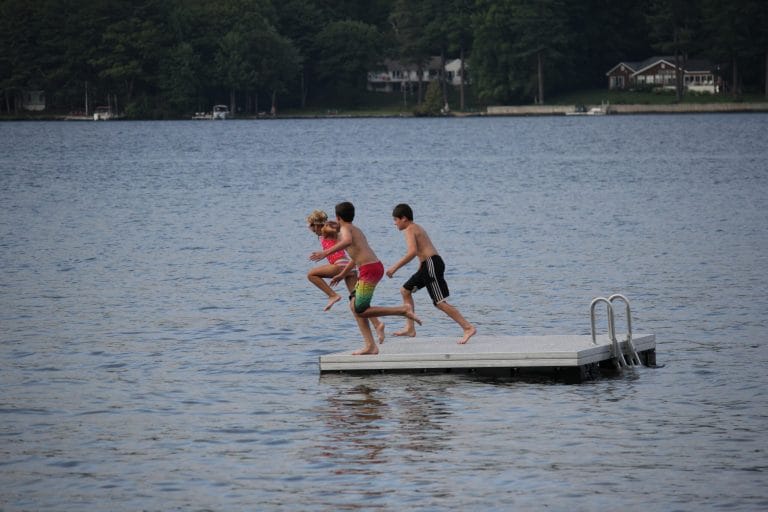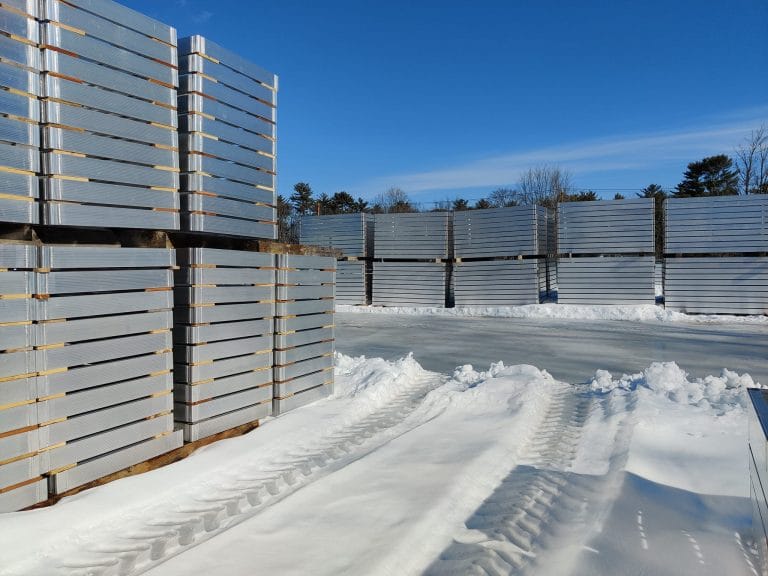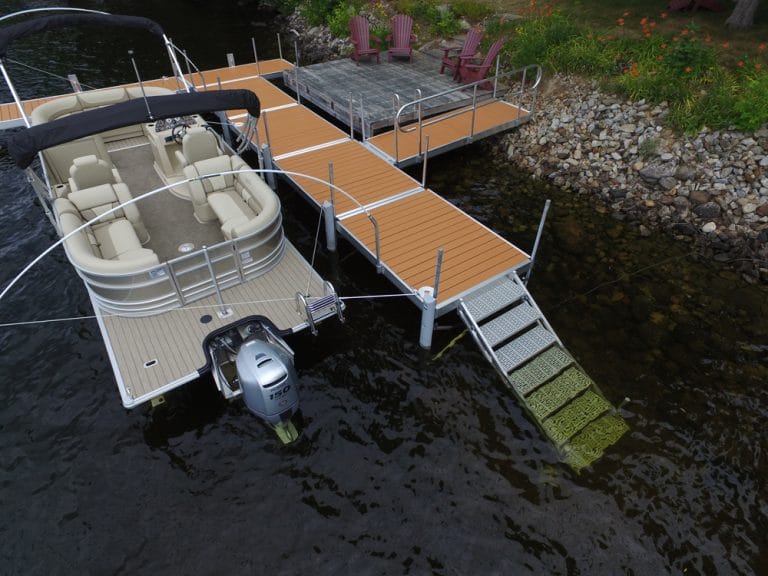Your cart is currently empty!
Winter Dock Storage Tips
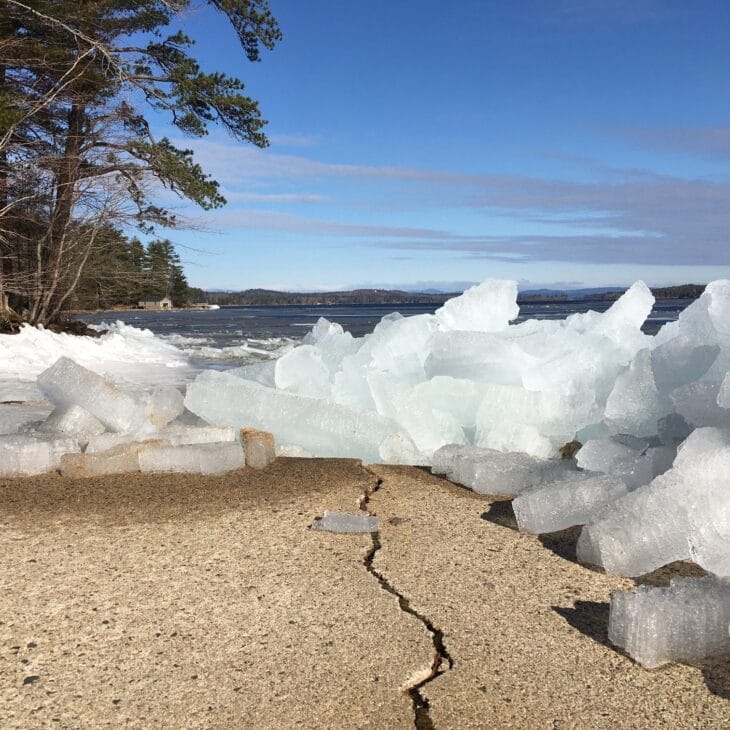
Why Remove Your Dock for Winter?
Removing your dock before winter is crucial to avoid damage from ice and freezing temperatures. Ice can shift, expand, and put tremendous pressure on dock frames and decking, leading to bent aluminum, cracked panels, or warped wood. Proper off-season storage protects your investment and makes setup easier when warmer weather returns.
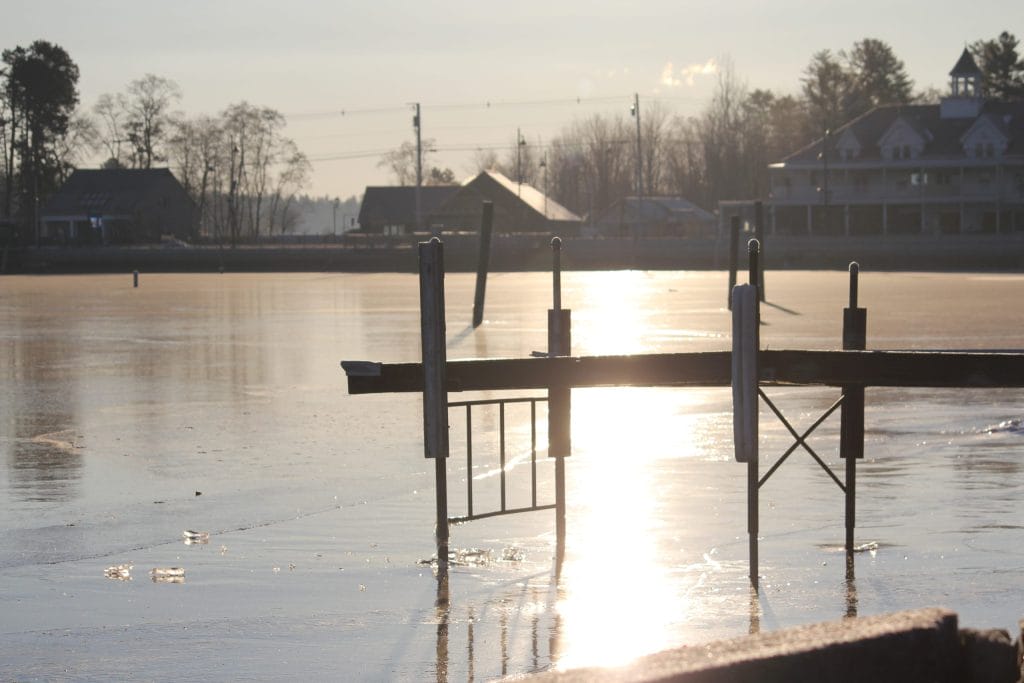
Maintaining your dock correctly during the winter ensures it’s ready for the next season. Here are some best practices for keeping your dock safe and ready for next season.
Store Decking in the Aluminum Frames
Whenever possible, keep your decking inside the original aluminum dock frames. The frames help:
- Keep panels contained, square, and protected from damage.
- Prevent warping caused by temperature fluctuations.
- Make handling and stacking safer, reducing the risk of panels sliding, toppling, or being exposed to dirt, sap, or strong winds.
Decking stacked outside of its frame can be difficult to manage, especially if the frames have changed over the years. Older docks may not align perfectly with newer frames, making reassembly frustrating.
Indoor Storage for Wood Decking
If you have wood decking, store it flat in a dry, shaded area to avoid warping and sun damage. Use wooden strips between panels to prevent scratches on hardware. For the most protection, store real wood decking inside and out of the elements.
Advantages of Framed Storage Outdoors
Keeping decking in frames even when stored outside provides multiple benefits:
- Safety: Prevents people or pets from stepping into empty frames hidden by snow.
- Space efficiency: Stacked frames take up less yard space and reduce clutter.
- Stability: Deck panels stay square and won’t slide or tip over.
- Child safety: Reduces the temptation for climbing and prevents injuries.
Panels stored in frames do not need to be latched, saving time when it’s time to reinstall the dock.
Aluminum Dock Care
To protect your aluminum docks:
- Store them on blocks to avoid dirt and leaf staining.
- Cover them with a tarp that is ventilated and held away from the frame edges to prevent standing water, which can cause discoloration.
- Leave frames with synthetic decking uncovered if desired – it’s low-maintenance, weather resistant, and holds up well outdoors.
Cleaning and Maintenance
Sap, mildew, and dirt are easy to remove from synthetic decking with a power washer. Storing decking in frames often protects the sections underneath, minimizing the cleaning needed before reinstallation.
Following these storage tips will help keep your dock in top condition, ensuring an easier and smoother setup next season.

